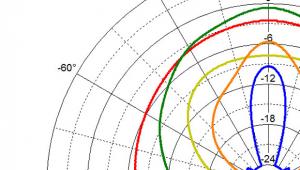Review: Flips headphones Page 2
Flipping Back to Private Sound
As headphones, the Flips are fairly comfortable. The earpads aren't quite as large as I'd like, but I was able to fit my larger-than-average earlobes into them and stayed comfortable for about 90 minutes or so.
The Flips sound substantially different when you use them as headphones. It reminded me of the bass-heavy balance of the original Beats Studio (not the New Studio) or the Skullcandy Hesh2, although all the boost seems to be in the upper bass instead of in the mid- and lower bass as with hip-hop-oriented headphones like the Studio. The Flips' prominent bottom end makes the sound seem somewhat muffled. James Taylor's vocal on "Shower the People" from Live at the Beacon Theatre sounded like he was singing through a bath towel folded over a few times.
"Sounds like it does when the stereo's playing and my head's under the pillow," my fellow Tech^2 blogger Geoff Morrison commented.
Why so different? I'd guess it's because the internal amp shuts off when you use the Flips as headphones. Maybe the Flips is tuned more as a speaker than for optimal headphone performance. Maybe there's some nice EQ going on in the amp that's lost when the headphones go to passive mode.
There's an oft-ignored psychoacoustical effect at play here. When you boost the bass, it tends to make the treble and upper midrange sound dull, even if you didn't change the absolute level of the higher frequencies.
I could go on, but it's clear this isn't a headphone for serious listening. It's no worse than what most kids listen to, though. Actually, it's pretty typical of the bass-heavy headphones that dominate the low end of the market.
Measurements
I measured the performance of the Flips headphones using a G.R.A.S. 43AG ear/cheek simulator, a Clio FW audio analyzer, a laptop computer running TrueRTA software with an M-Audio MobilePre USB audio interface, and a Musical Fidelity V-Can headphone amplifier. Measurements were calibrated for ear reference point (ERP), roughly the point in space where your palm intersects with the axis of your ear canal when you press your hand against your ear. I experimented with the position of the earpads by moving them around slightly on the ear/cheek simulator, and settled on the positions that gave the best bass response and the most characteristic result overall.
The frequency response measurements of the Flips used as headphones are idiosyncratic to say the least. The left channel shows a big peak at 150 Hz, while the right channel shows a big peak at 400 Hz. I didn't notice the bass pulling to the left during my testing, but I did notice it after I saw the measurements. I'll leave it to you to decide how much of that effect is psychological and how much is real. (I'd guess that the two channels measure so differently because the rechargeable battery and, presumably, the electronics are in the left earpiece.) Anyway, the boost in the right channel, especially, is the kind of thing that tends to muddy the sound; from what I've heard and measured, you get a more pleasing balance by boosting somewhere around 50-100 Hz.
Adding 70 ohms output impedance to the V-Can's 5-ohm output impedance to simulate the effects of using a typical low-quality headphone amp shifts the tonal balance even more toward the bass. So the Flips is not the best choice for use with cheap smartphones and most laptops, most of which have headphone amps with fairly high output impedances. The waterfall (spectral decay) plot looks fairly clean, with less resonance than I'm used to seeing around 200 to 500 Hz, but a narrow resonant peak around 3 kHz.
Total harmonic distortion (THD) is low above 70 Hz, but rises to 3 to 4 percent between 40 and 60 Hz. Isolation is typical or maybe a hair better than average for a small, passive over-ear headphone: not much in the bass, hitting -12 dB at 1 kHz, and maxing out at about -25 dB at higher frequencies.
Impedance dives from 48 ohms at 20 Hz to 9 ohms at 20 kHz, which is why the tonal balance shifts with high-impedance sources. Average sensitivity from 300 Hz to 6 kHz, calculated for 48 ohms impedance (the official impedance spec is 8 ohms but obviously that's incorrect) is rather low at 95.9 dB, but I didn't have a problem getting the Flips to play loud enough with my Samsung Galaxy S III or my iPod touch.
I also tried doing my MCMäxxx™ level test: cranking up "Kickstart My Heart" until it distorts, then backing it off a hair and measuring the sound pressure level. Normally I measure at 1 meter, which is a typical listening distance for a portable speaker, but this time I measured at the entrance to my ear canal, in order to capture the actual volume the Flips will deliver when it's hanging around your neck. The sound stayed clean even when cranked full-blast on my iPod touch, and at this level, I measured 88 dB at my ear canal. Not blasting but loud enough to get your foot tapping.
Bottom Line
The concept of the Flips headphones is surprisingly fantastic. I could see a commuter buying a pair to use as headphones on the subway then as a personal sound system in the office. I could see kids buying them for their intended use: sharing their favorite tunes with friends. I'd like to see a more refined tuning on the headphone function, though. With a little work, this could be a really great product. Hey, if Beats and Skullcandy can retune their headphones without feeling embarrassed about it, anybody can.





























































